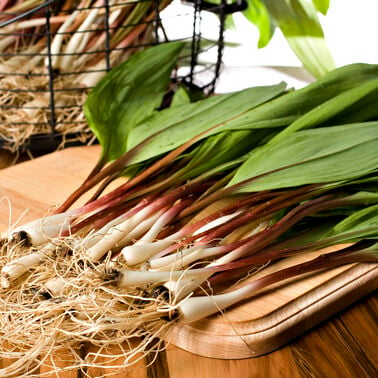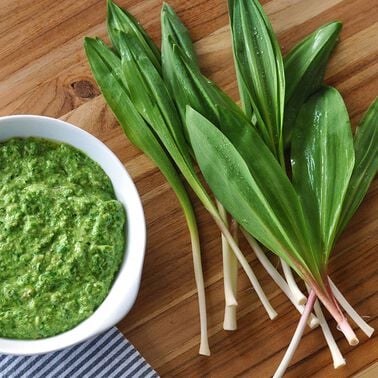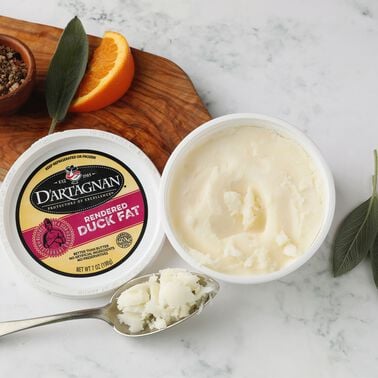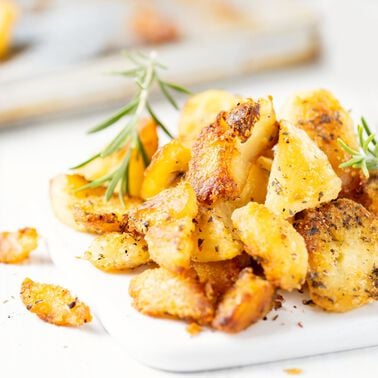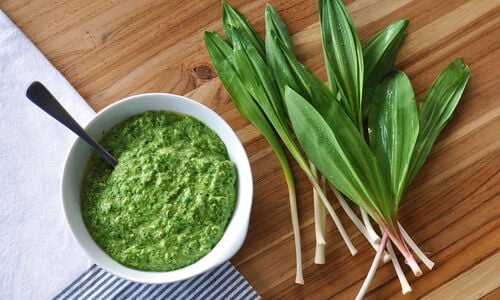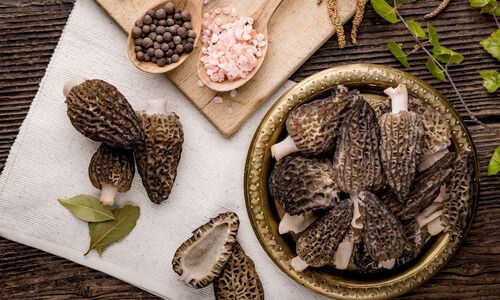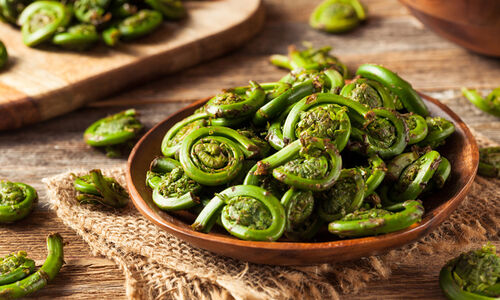
What Are Wild Ramps?
The ramp is a wild onion native to North America, and is sometimes called spring onion, wild leek or wild garlic. Long appreciated by country folk and eaten as a spring tonic, the wild ramp has taken on a mantle of cult status among chefs. As a result, there are more people enjoying ramps than ever before, and awaiting ramp season with anticipation. Ramps have defied attempts at cultivation, so are only picked in the wild.
Wild Ramps Season
Ramps begin to appear in late March, when it’s still a bit chilly, and the forests are grey with winter. Ramps are often the first green things to peek out of the litter on the forest floor. The season will begin in the South and sweep northward. Generally available from April to June, ramps are a seasonal delicacy, enjoyed all the more for their brief appearance.
Where to Find Wild Ramps
Ramps are most often found near the banks of streams or rivers, in moist areas that are shaded, and on hillsides. Their range is anywhere from South Carolina to Canada, and the season starts in the south moving north as the weather warms.
Ramps grow in clumps and spread outward, by seed and by root, and can cover acres of land with their pointed, distinctive green leaves. Ramps are an easy and safe plant for the beginner forager to pick and eat. But if you forage, take care not to over harvest in any one patch, as it takes years for ramps to propagate.
Our foragers are conscientious and protect the ramp patches by rotating to different fields annually, never harvesting more than a third of an area, and re-seeding and transplanting ramps that are not used. They also replant roots and encourage all of us to replant roots that are trimmed off as we prepare them. We are grateful to our intrepid foragers who have done the work so that you can buy ramps on our website.
How to Prepare Wild Ramps
Since ramps are collected in the forest, they tend to be dirty. The bulb and roots are always coated in dirt, so they must be heavily rinsed. Cut off the roots as close to the bulb as possible, and run the green leaves under water carefully. Bugs, twigs, pine needles, and other detritus of the forest floor might hitch a ride on your ramps.
The leaves and bulbs are both edible, though are often cooked separately, as the bulbs take a bit more time to cook through. The bulbs offer a punch of garlic flavor to any dish that might benefit from that: soups, eggs, rice, or potato dishes. Ramps can be eaten raw, as you would a scallion, though they will be much stronger in flavor.
Wild Ramp Recipes
In central Appalachia, ramps are most often fried with potatoes in bacon fat (though duck fat does nicely, too), or with scrambled eggs and bacon.
Wonderful with bacon, egg dishes, casseroles, potatoes, in pesto, and anywhere you might use scallions or leeks, wild foraged ramps are a flavorful way to celebrate spring. You can sauté ramps as you would onions, or grill them whole, add them to a gratin, or mix them into a cornbread stuffing
To preserve the distinctive garlicky flavor, try pickling ramps, or freezing the bulbs to enjoy later. Ramp pesto is another way to enjoy ramps for months to come.
